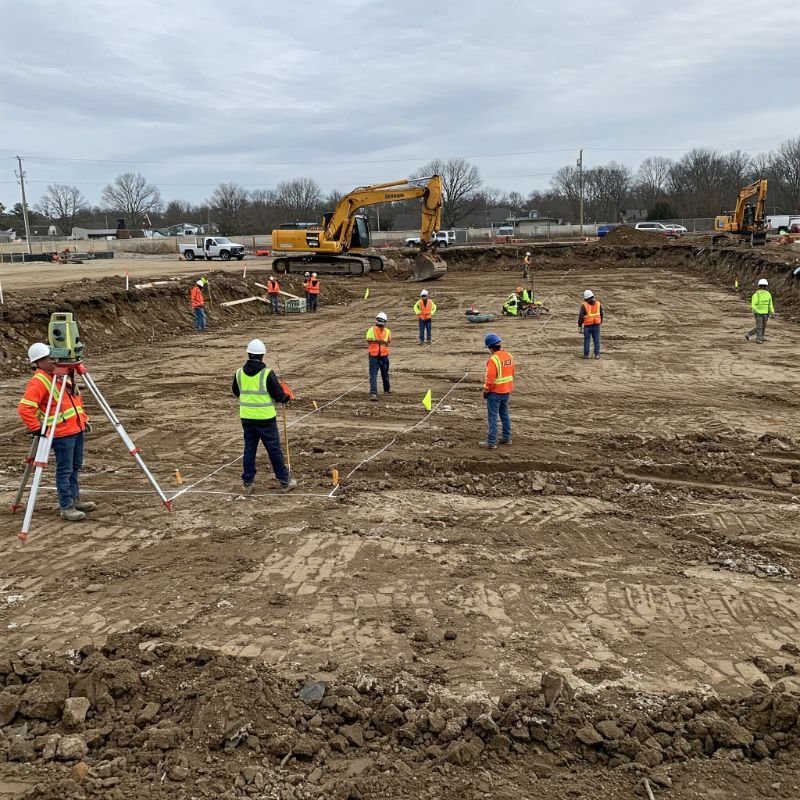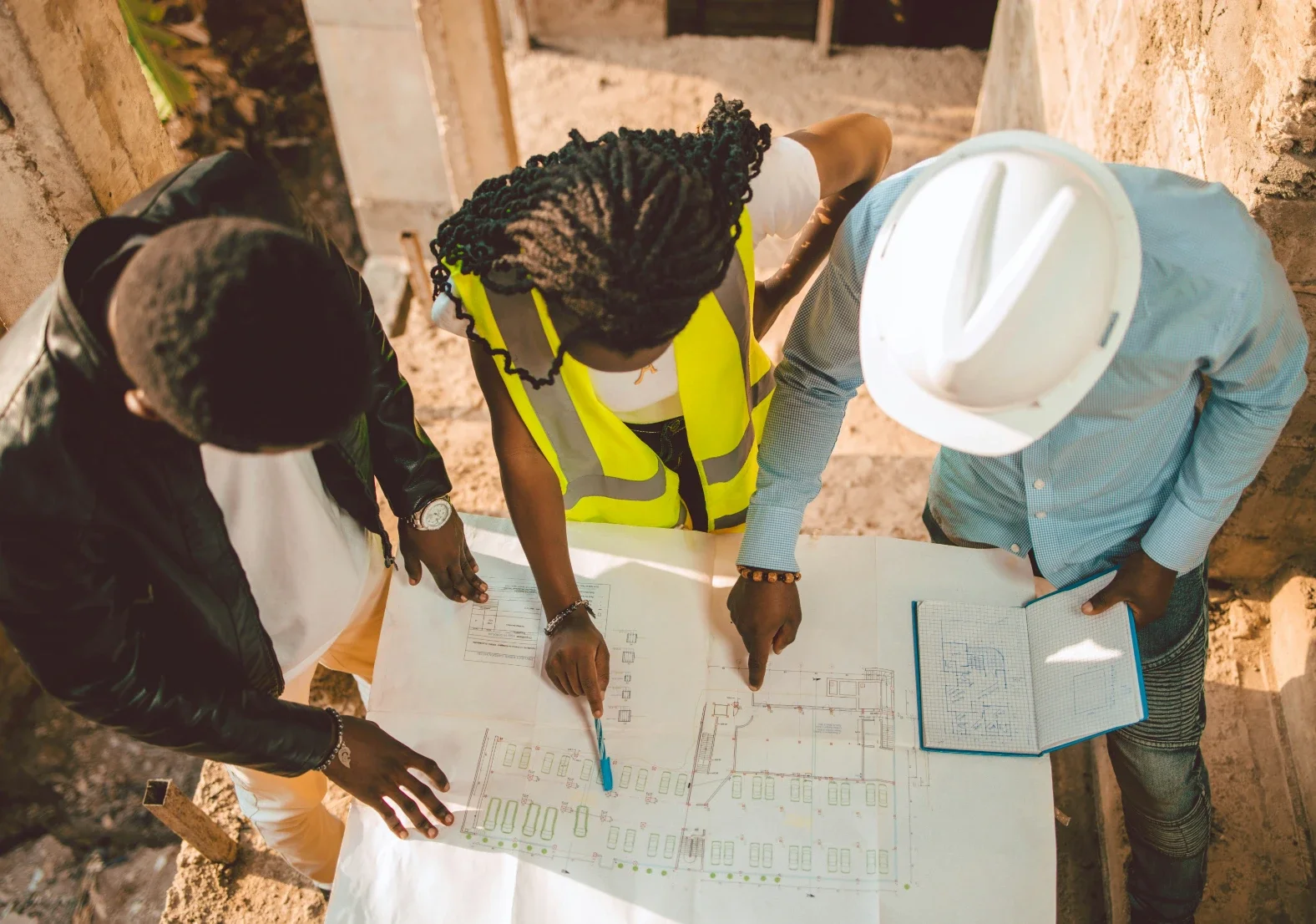5 Mistakes to Avoid During Site Preparation
Avoid costly delays by learning the top 5 site preparation mistakes, from poor planning to ignoring soil conditions. Build smart from the ground up.
Proper groundwork is essential for any construction project's success. According to industry experts on site preparation, this critical phase establishes the foundation for everything that follows, making it essential to execute correctly. Many contractors and project managers experience costly delays, safety hazards, and structural issues due to oversights during this crucial stage. Understanding these common pitfalls can help you avoid significant problems down the line and ensure your project proceeds smoothly from start to finish.
Inadequate Soil Testing
Failing to thoroughly analyze soil conditions represents one of the most detrimental errors during site preparation. This oversight can lead to foundation failures, unexpected settlement, and drainage problems that compromise the entire structure's integrity. Professional geotechnical investigations provide essential data about soil composition, load-bearing capacity, and potential contaminants that impact construction methods.
Several key factors should be assessed through comprehensive soil testing:
Soil classification and composition
Load-bearing capacity
Moisture content and drainage characteristics
Presence of expansive soils
Contamination levels
These soil properties significantly affect foundation design, excavation techniques, and necessary stabilization measures. Without proper testing, you risk encountering unforeseen ground conditions that necessitate expensive redesigns and delays. Investing in thorough geotechnical surveys early saves substantial resources later by allowing appropriate planning for actual site conditions rather than assumptions.
Neglecting Proper Drainage Planning
Water management represents a fundamental aspect of land development that requires careful consideration during the initial phases. Poor drainage solutions frequently result in erosion, flooding, foundation damage, and environmental compliance issues. Effective stormwater management systems must be integrated into the site preparation process, not added as an afterthought.
Drainage planning should address multiple considerations that impact both construction and long-term site stability:
Natural water flow patterns
Stormwater retention requirements
Erosion control measures
Groundwater conditions
Environmental protection regulations
Professional civil engineers can develop comprehensive drainage solutions that prevent water-related complications. These systems redirect water away from structures, manage runoff velocities, and filter contaminants. Thoughtful drainage implementation protects your investment and preserves surrounding properties from water damage. Remember that retrofitting drainage solutions after construction proves significantly more expensive than incorporating them during initial site preparation.
Overlooking Utility Location and Access
Construction activities without accurate utility mapping create dangerous and costly situations. Before any excavation begins, identifying all underground infrastructure prevents accidental service disruptions, worker injuries, and expensive repairs. This preparation step requires coordination with utility companies and verification of existing records through specialized detection services.
Comprehensive utility location procedures involve locating various infrastructure elements:
Electrical lines and conduits
Water and sewer pipes
Gas lines
Telecommunication cables
Drainage systems
Professional utility locating services employ various technologies including ground-penetrating radar and electromagnetic detection to identify buried infrastructure. These services provide precise mapping that helps planning teams design appropriate access points and protection measures. Establishing utility corridors early in the process streamlines future installations and minimizes conflicts between different systems. Careful coordination with service providers ensures appropriate placement and sufficient capacity for project requirements.
Ignoring Environmental Regulations and Permits
Legal compliance represents a non-negotiable aspect of construction that requires attention before any ground disturbance occurs. Environmental protection laws govern numerous aspects of development, from wetland preservation to endangered species protection. Failing to secure proper permits or comply with regulations can result in substantial fines, work stoppages, and even project cancellation.
Environmental compliance typically includes multiple regulatory considerations:
Erosion and sediment control
Wetland and waterway protection
Tree preservation requirements
Endangered species habitat
Air quality management
Engaging environmental consultants early helps navigate complex regulations and develop appropriate compliance strategies. These professionals identify sensitive areas, recommend protection measures, and assist with permit applications. Establishing good relationships with regulatory agencies demonstrates commitment to responsible development. Environmental protection measures implemented during site preparation often become permanent features that enhance project sustainability and community acceptance.
Insufficient Planning for Site Access and Logistics
Effective construction depends on well-planned transportation routes, material staging areas, and equipment positioning. Inadequate logistics planning creates inefficiencies, safety hazards, and neighborhood disruptions that damage project relationships. Thoughtful site organization maximizes productivity while minimizing negative impacts on surrounding properties.
Comprehensive logistics planning addresses numerous operational factors:
Construction vehicle routes
Material delivery and storage areas
Equipment positioning and movement
Worker parking and facilities
Neighborhood traffic management
Professional construction managers develop detailed site utilization plans that accommodate changing needs throughout project phases. These plans optimize workflow by positioning materials near installation locations while maintaining clear access routes. Strategic planning reduces material handling costs, minimizes waste, and improves worker safety through organized site conditions. Communicating access plans to suppliers, subcontractors, and neighbors prevents misunderstandings and demonstrates professional project management.
Avoiding these common mistakes during site preparation establishes a solid foundation for construction success. Thorough planning, appropriate testing, and regulatory compliance create conditions that support efficient building processes. Remember that addressing challenges during site preparation proves significantly more cost-effective than correcting problems after construction begins. The investment in proper groundwork practices delivers substantial returns through reduced complications, improved safety, and enhanced project durability.












